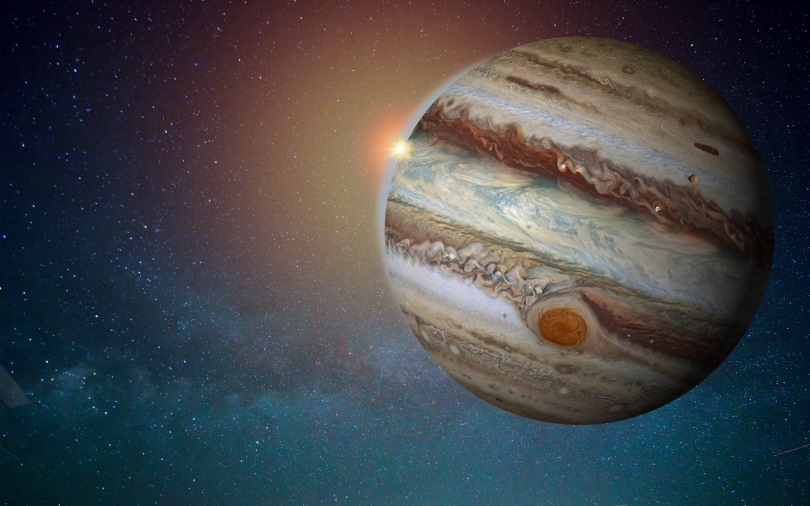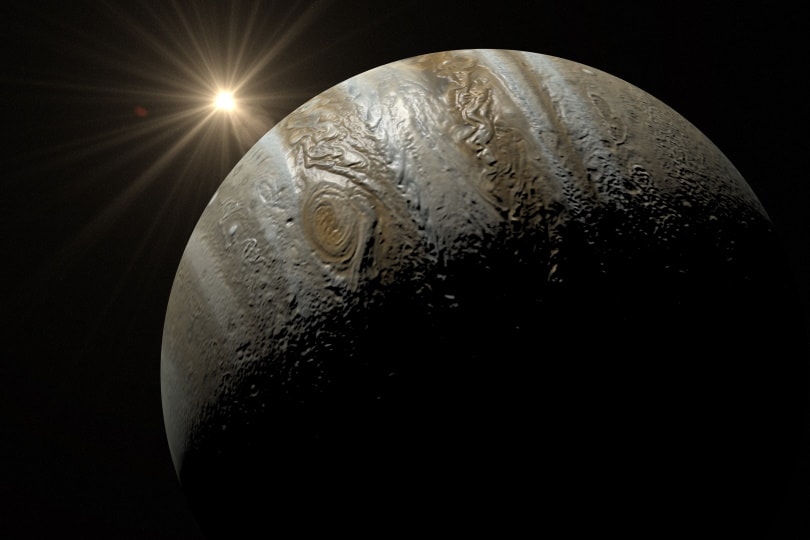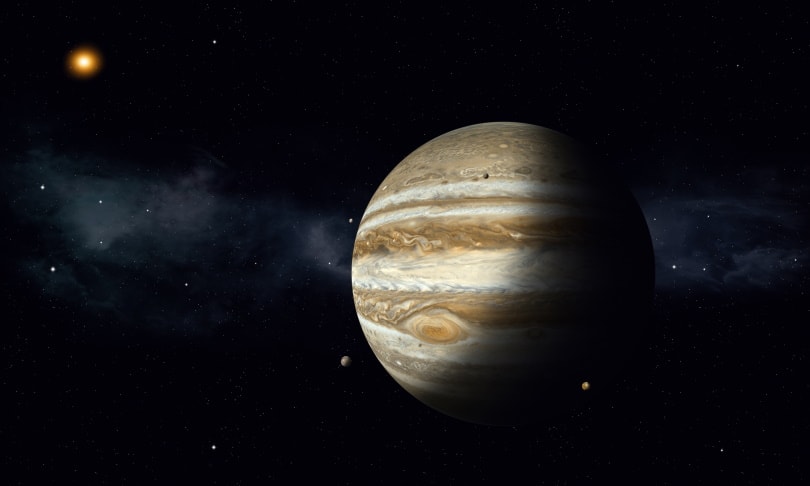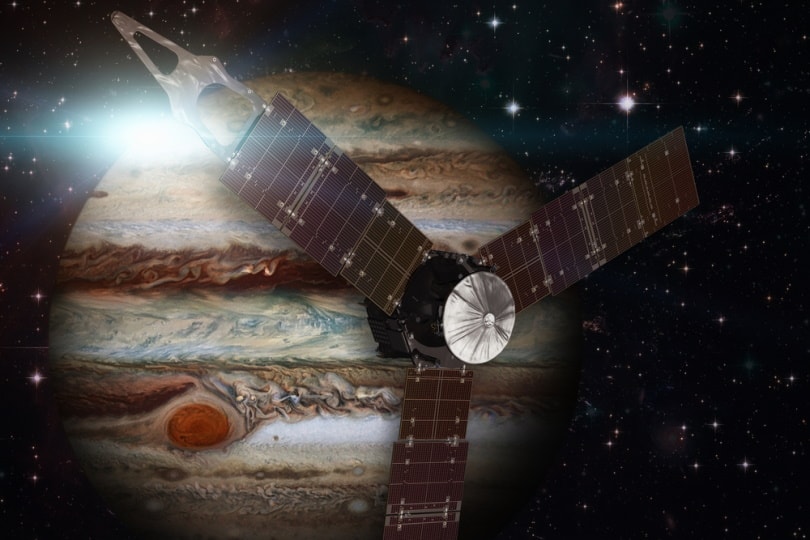How Did Jupiter Get Its Name? What You Need To Know
Last Updated on

Jupiter is hard to miss on a clear night. It starts peeking over the horizon before sunrise in late March to mid-April and is the third brightest object in the sky, given that it’s the largest planet in our solar system. Jupiter is a mighty orb with an equally grand name. The ancient Greeks called their king of the gods, Zeus, “The Romans Jupiter.” Hence, the origin of this colossal heavenly body’s title and symbol (♃).


| Diameter | 88,846 miles |
| Distance From Earth | 365 million miles at its closest point |
| Place From the Sun | Fifth (462,268,137 miles) |
| Number of Moons | 80 |
| Orbital Period | 11.862 years |
| Year Length | 4,333 days |
How Astronomical Objects Are Named
Ancient peoples named the visible objects in the sky. Many were of cultural importance, which is why it became necessary to standardize them. The International Astronomical Union (IAU) is the governing body whose task is to give planets, planetary features, satellites, meteor showers, and comets their official titles. This first occurred in 1976, which then included Pluto and Earth’s moon.
However, the names of the planets were already commonplace even before the IAU came into existence in 1919. Declaring these names was merely a formality. All originated from Roman mythology, with the exception of Uranus, which comes from the Greek god of the sky. The title “Earth” is from the Old English word eorþe, and using it for our planet’s name began around 1400 AD.

The Mythology of the Planet
The mythology surrounding Jupiter and the other planets is fascinating. Understanding the myths of this Roman god makes the choice of the planet’s name a fitting one. These people considered Jupiter to be the god of sky and thunder. His role extended to government, justice, and religion. The Greek equivalent is Zeus, although they’re not one and the same.
Remember that the Romans worshipped several gods and goddesses. The people believed that honoring these deities could influence their lives positively. Places that were once part of the Roman Empire have monuments and temples that still bear witness to these beliefs even today. Many parallels exist between Roman and Greek mythology because the nations were contemporaries.

Facts About Jupiter
Jupiter differs radically from Earth, explaining why life exists here and not there. Our atmosphere consists primarily of nitrogen and oxygen, essential elements in biology. Jupiter is a gas giant composed of hydrogen and helium instead. Interestingly, it could have been a star had it grown larger after its formation 4.5 billion years ago.
Jupiter’s iconic feature is its Great Red Spot. You can easily identify it with a powerful enough telescope. It may seem like a solid object, but it’s actually a storm that’s been raging for eons. The area is wider than Earth and 40 times deeper than the Challenge Deep, the southern end of the Mariana Trench in the Pacific Ocean. That’s over 1 billion feet.
Everything is bigger on Jupiter, considering it’s 11 times the size of our planet. That even applies to oceans. The gas giant has the largest ocean in the entire Solar System, but it doesn’t contain water. It is filled with liquid hydrogen. The temperature and pressure within its atmosphere are responsible for this.
American space probe Pioneer 10 was the first to get anywhere close to Jupiter in 1973. Several other missions followed throughout the 1970s. NASA’s Juno made it there in 2016. While Jupiter likely can’t support life, its satellites are another story. Scientists discovered what may be evidence of water vapor on Ganymede, a satellite of Jupiter, based on data collected from NASA’s Hubble Space Telescope.
It’s essential to understand that elements and chemical compounds behave differently than what we may observe here on Earth. The atmospheric extremes cause these types of phenomena to occur. This discovery can have profound implications for other areas of study. They can bring us closer to answering the question of whether life exists anyplace else in the universe.


Conclusion
What’s clear is that we have much to learn about this planet. These findings have only scratched the surface of the secrets that Jupiter has yet to reveal. In the meantime, we can gaze into the sky and let our imagination light the way. Jupiter’s story has only begun.
Featured Image Credit: ParallelVision, Pixabay
About the Author Chris Dinesen Rogers
Chris has been writing since 2009 on a variety of topics. Her motto with all of her writing is “science-based writing nurtured by education and critical thinking.” Chris specializes in science topics and has a special love for health and environmental topics, and animals of all shapes and sizes.
Related Articles:
How to Collimate Binoculars: 9 Expert Tips
How to Clean a Refractor Telescope: Step-by-Step Guide
How to Clean a Telescope Eyepiece: Step-by-Step Guide
How to Clean a Rifle Scope: 8 Expert Tips
Can You Use Binoculars to Look At Stars? How to Choose the Right Pair
How to Choose Binoculars for Bird Watching: 10 Expert Tips
15 Crucial Facts About Ultraviolet Rays & the Sun
What Constellation Is Spica In? The Interesting Answer!
